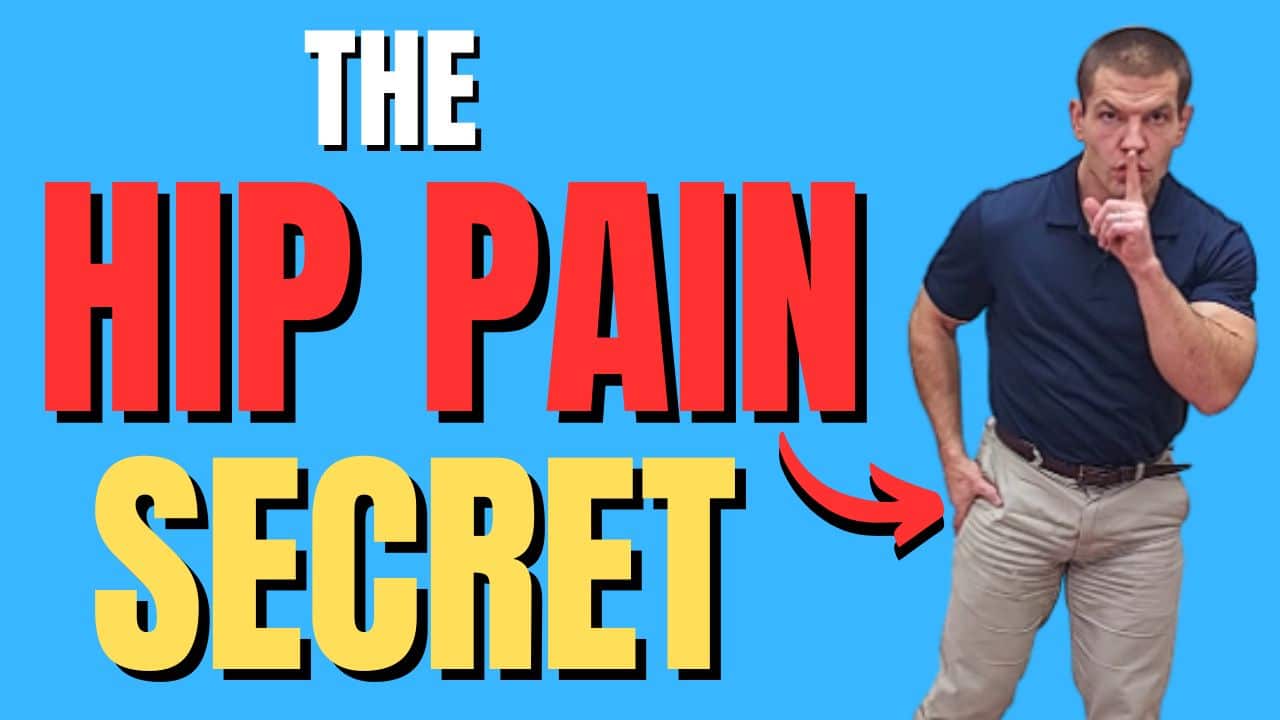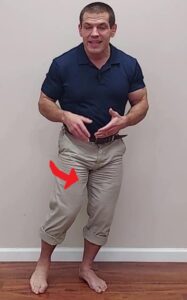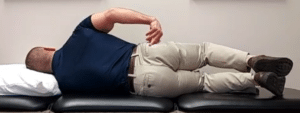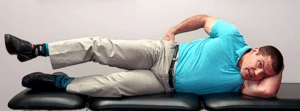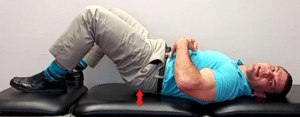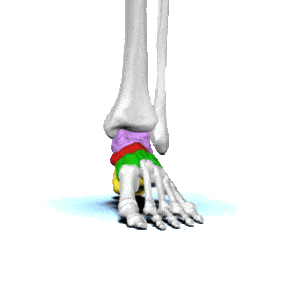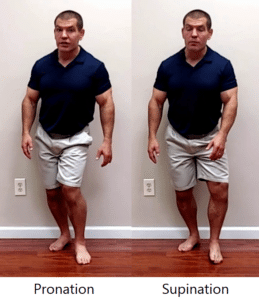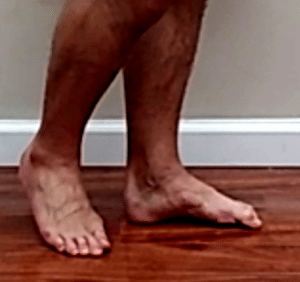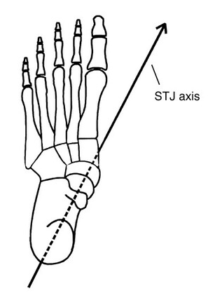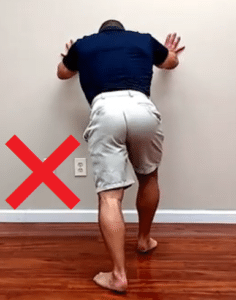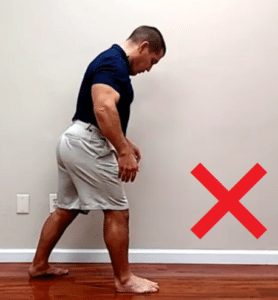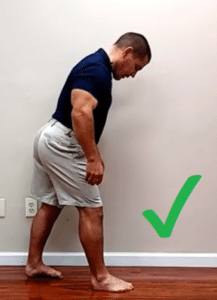What Can Cause Hip Pain Without Injury?
The most common cause of hip pain without injury is due to faulty movement patterns that are repeated over time. One of those is excessive hip internal rotation.
However, there's another hidden cause of hip pain that most people don't know about. Learn what it is plus 3 effective solutions to fix it in this post.
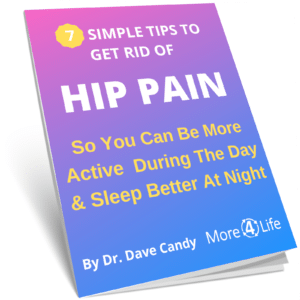
Structural Causes of Hip Pain
There are many different structures that can cause hip pain.
These diagnoses can cause pain on the outside of the hip:
These diagnoses can cause hip pain in the groin:
However, most of the time, all of these conditions have a common movement cause.
That cause is excessive hip internal rotation.
Now, that's NOT the secret cause of hip pain that I was referring to.
It may be news to you if this is your first time experiencing hip pain.
However, most physical therapists recognize that excessive hip internal rotation and adduction (knee toward midline) can cause hip pain.
That's why most physical therapy exercises for hip pain focus on glute strengthening.
Those include exercises such as the:
Side leg raise
Bridge
Those exercises are all good for hip pain to some extent.
However, there are a few problems:
- People often do them wrong (Learn how to do them right)
- Everything changes when you stand up and you put your foot on the ground.
The Hidden Cause Of Hip Pain
Once your foot hits the ground, your hip, knee, and ankle motion are all interconnected.
If there's a problem down at your foot and ankle, it's going to affect your hip.
That's not to say that you shouldn't strengthen your glutes.
Again, those are all very good exercises.
However, you also need to consider what's happening at the foot and the ankle.
In the rest of this post, I'll cover two foot and ankle issues that can cause hip pain.
The Foot-Hip Connection: Cause #1
The ankle needs to be in a position known as subtalar neutral.
The bone known as the talus (purple below) needs to be centered between your two lower leg bones:
That subtalar neutral position is halfway between maximum pronation and supination:
The subtalar neutral position give you the most flexibility and mobility out of your ankle when you go to take a step.
To find that position. Go all the way into pronation, all the way into supination, and then come about halfway back in between.
Now look at where your foot is.
If your big toe is not touching the floor, that's a problem.
When you go to take a step, you're going to have to be able to push off of that big toe.
If you need to pronate too much to get your big toe down to the floor to push off of it, it's going to cause that excessive hip internal rotation.
It doesn't matter how strong your glutes are if your foot's not hitting the ground.
You're going to have to internally rotate your hip.
Here are 2 ways to fix that problem.
2 Ways To Fix Hip Pain Caused By Foot Problems
1. Strengthen your foot arch muscles
One is just strengthening the muscles in your foot in order to get your big toe down to the floor.
You can do that by pulling the ball of your foot towards the heel and slightly scrunching your toes.
That helps get contact of your foot on the floor so that you can push off the big toe without excessive hip internal rotation.
How often should I do this exercise?
If you need to do it at all, you should do it every time you take a step.
I know that sounds like a lot, but again, hip pain is caused by repeated small movement problems over time. The way to fix that is by using the correct movement pattern whenever you're walking.
So that's the first tip.
2. Custom orthotics for hip pain
Orthotics can also help to get your big toe to the ground if it doesn't touch naturally.
However, most off-the-shelf orthotics only support your midfoot arch. They don't go into the forefoot.
Superfeet All-Purpose Support High Arch ...
$54.95 (as of July 26, 2024 18:26 GMT -05:00 - More infoProduct prices and availability are accurate as of the date/time indicated and are subject to change. Any price and availability information displayed on [relevant Amazon Site(s), as applicable] at the time of purchase will apply to the purchase of this product.)If you do need orthotics to help get your big toe getting to the ground, you're probably going to need custom orthotics that create a post underneath the big toe.
Talk to a physical therapist who knows a lot about the foot mechanics if that's something you need.
In any case, it's still a good idea to do the arch lift exercise mentioned above
Orthotics are like a supplement to proper foot mechanics. They're not to be used in place of it.
Just like you use dietary supplements to supplement a proper diet, you can't just eat horrible foods and then take a pill and expect your health to be good.
The same thing applies to your foot.
You should still try to lift your arch on your own. Then adding orthotics can be helpful if you need them.
The Foot-Hip Connection: Cause #2
The second problem related to the ankle that affects your hip is stiffness in your ankle joint or stiffness in your calves.
If you have too much stiffness either in the ankle joint itself or in the calves, when you go to take a step, you're going to have to get more motion from somewhere in order to get your body weight out in front of your foot.
You can do that by moving at another joint called the subtalar joint. The primary motion at that subtalar joint is pronation and supination.
So by pronating your foot more, you can get your weight out in front of you to take a longer step.
Howeer that also causes, hip internal rotation, which can cause hip pain.
Therefore, it's a good idea to stretch your calves.
However, most people stretch their calves wrong.
They allow their foot to turn out and their foot to flatten, which is the equivalent of pronation.
You don't want to allow your foot to pronate when you're trying to do a stretch to prevent over pronation.
To stretch your calves correctly, start out with that short foot exercise or arch doming exercise mentioned above.
Then take a step.
The key points here include:
- The heel should remain on the floor
- There should be an arch in the foot
- Your knee shouldn't come inward into a position of hip internal rotation
That might mean taking very short step if you have really stiff calves.
It may be a slightly longer step if your calves are not quite as stiff.
Just go to the point where you can comfortably.
You may not feel a really strong calf stretch.
You may just get to the point where you run out of motion or you can't go any farther without your heel coming up off the floor or without your foot flattening down.
And that's okay.
Summary
So to review, the two foot and ankle issues that can cause hip pain include:
- The big toe not touching the ground. You can fix that problem by doming the arch and potentially adding orthotics if you need it.
- Stiffness in your ankle joint or your calves. You can fix that by doing a calf stretch but making sure that you keep your foot and ankle in the proper position when doing so.
What Else Can I Do To Relieve Hip Pain?
There are other things besides your foot and ankle mechanics and your glute strength that affect hip pain.
Those mostly affect you when you're walking.
Although we do a lot of walking in our everyday lives, we don't walk 100% of the time.
Other things that can cause hip pain include:
Need Help For Hip Pain?
If you need help for hip pain and you live in the St. Louis area, we'd be happy to help you figure out the cause of your hip pain and what you can do to get rid of it.
Just tap the button below to request an appointment with one of our specialist physical therapists.
Like this post? Here are a few others you may enjoy:
Stop Pain In Front Of Hip Joint Near Groin When Walking
How To Walk Without A Limp (Even With Arthritis Or After Hip Or Knee Surgery)
Prevent hip pain when sleeping at night

